International Women’s Day 2018: why government still needs to focus on gender
Despite improvements in the representation of women in government, significant barriers to seniority still remain.
Despite improvements in the representation of women in government, Charlotte Baker says that in politics and the civil service, significant barriers to seniority still remain.
A hundred years after some women gained the right to vote in the UK, great strides have been taken towards a more gender-balanced political system. There are more female MPs then ever before; over 50% of civil servants are female; and there are finally the same number of women as men with the surname ‘Davies’ on the Welsh Affairs Committee.
There are not enough women at the top levels of the civil service, in key Cabinet positions and on select committees.
We are still a long way off gender balance
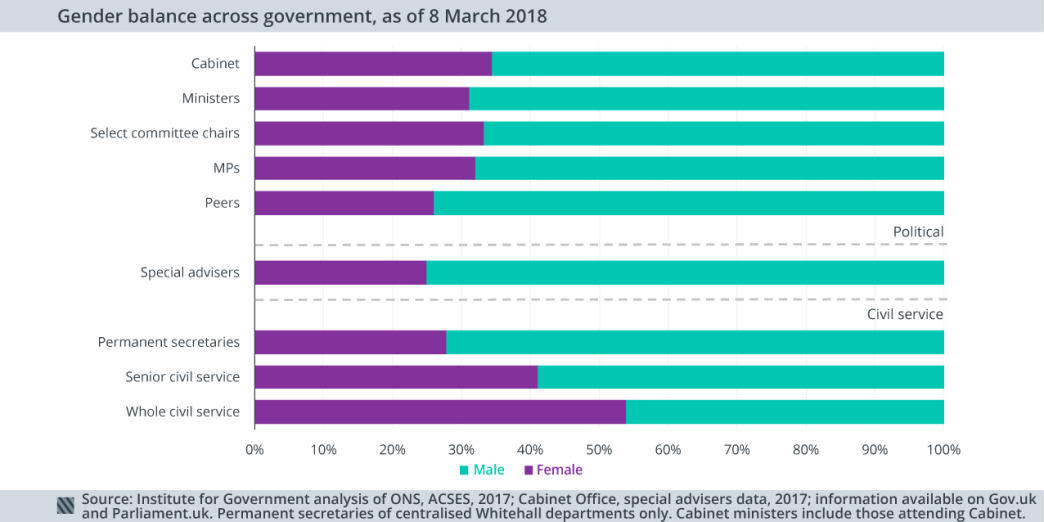
- Women remain underrepresented at senior civil service and permanent secretary level.
- Women still make up only 32% and 26% of the respective houses.
- Select committee membership is very male dominated: on six committees female MPs make up less than 20% of membership. The International Development committee has the worst balance, with just a single female member – equivalent to 9% of the committee’s members.
- 75% of special advisers (spads) are men and eight departments have no female spads at all, as of latest data in December 2017.
There has never been a female Chancellor of the Exchequer
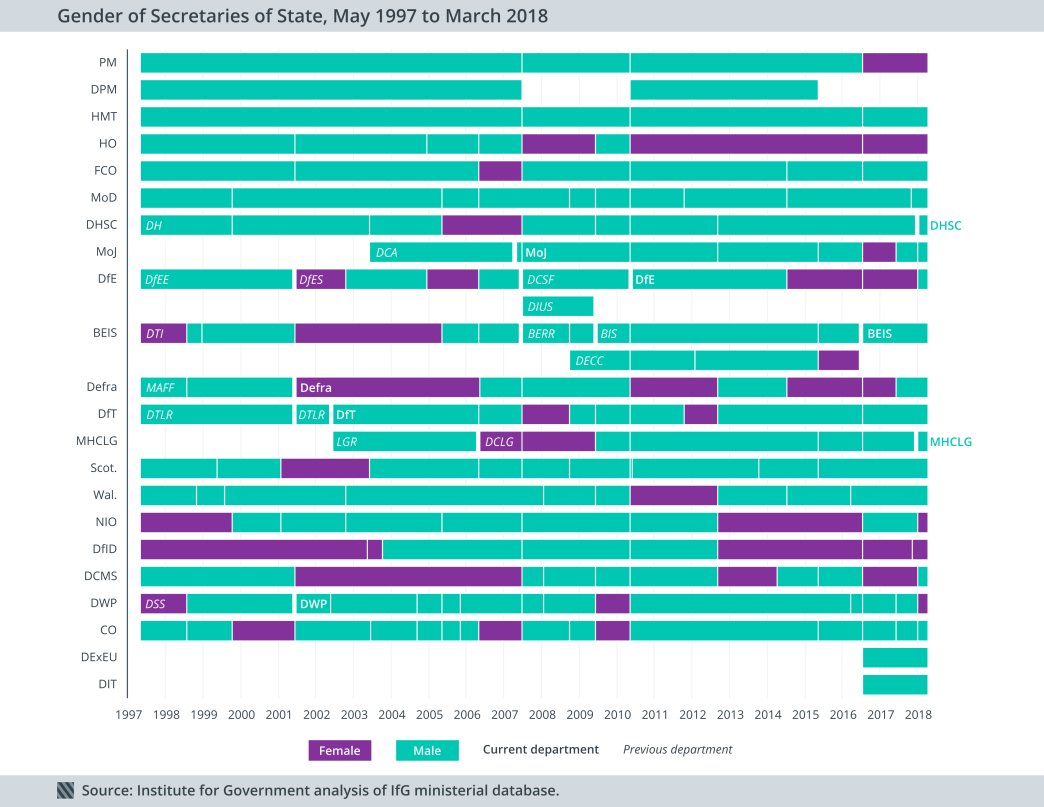
Some departments have never seen female representation at top ministerial level: there has never been a female Chancellor, Secretary of State for Defence, or Deputy Prime Minister – although Barbara Castle was First Secretary of State (1968–70). Other departments, such as DfID and the Home Office have a better track record.
While 34.5% of ministers attending Cabinet are women, only six women are full members of the Cabinet, making up 26%.
There has never been a female Cabinet Secretary in Whitehall
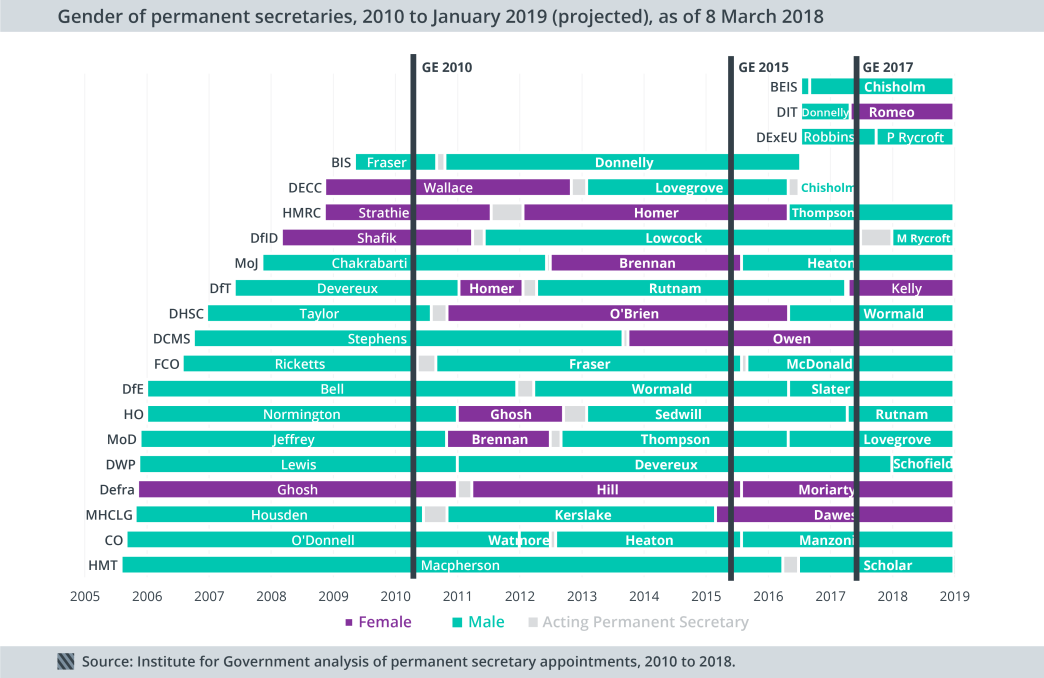
Some departments have a strong record of female leadership, for instance since 2006 every permanent secretary at Defra has been a woman. However, only five current Whitehall permanent secretaries are women, down from a high of eight for half a week in March 2011. Out of the last six permanent secretary appointments, the same number (two) have gone to women as to men with the surname Rycroft.
Though the permanent secretaries for the Scottish and Welsh governments are both women, there has never been a female Cabinet Secretary in Whitehall.
The more senior the grade, the lower the proportion of women
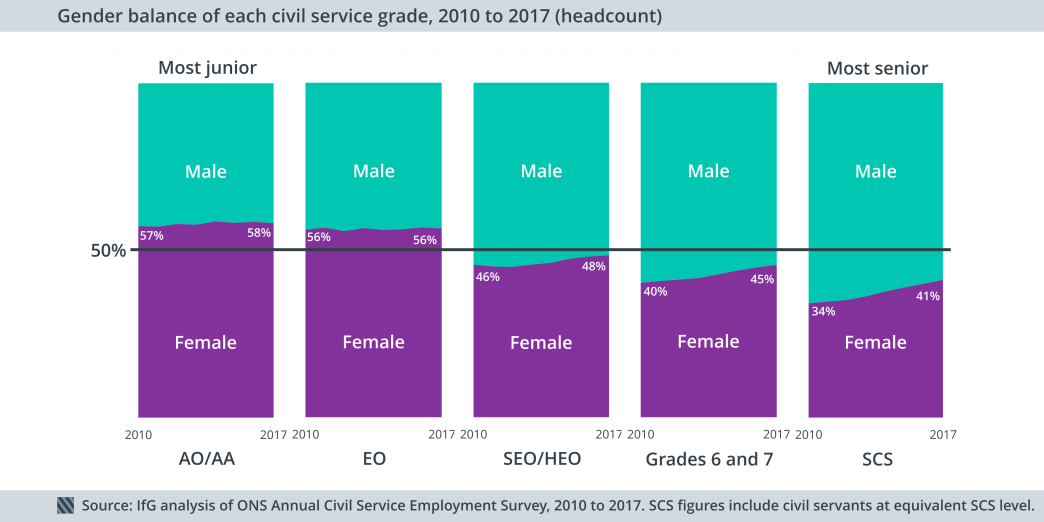
At every grade of the civil service, the percentage of female staff has increased since 2010. However, as they move up through the grades the female proportion decreases. Across the civil service more must be done to remove any blockages to the talent pipeline which stop women from reaching the most senior positions.
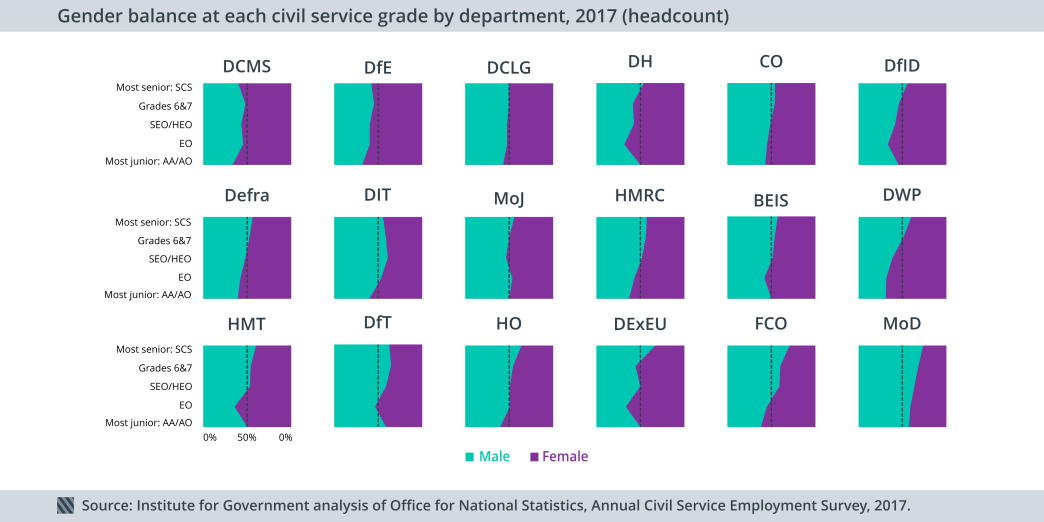
This pattern is most obvious in large departments – such as DWP, HO and HMRC – that have significant functions of operational delivery.
At every civil service grade in MoD, female civil servants make up less than 50% of the workforce. MoD has the lowest proportion of female civil servants of all the departments at every grade except AO/AA, where it is second only to DfT.
On a brighter note, this House of Commons is the most gender-balanced in history
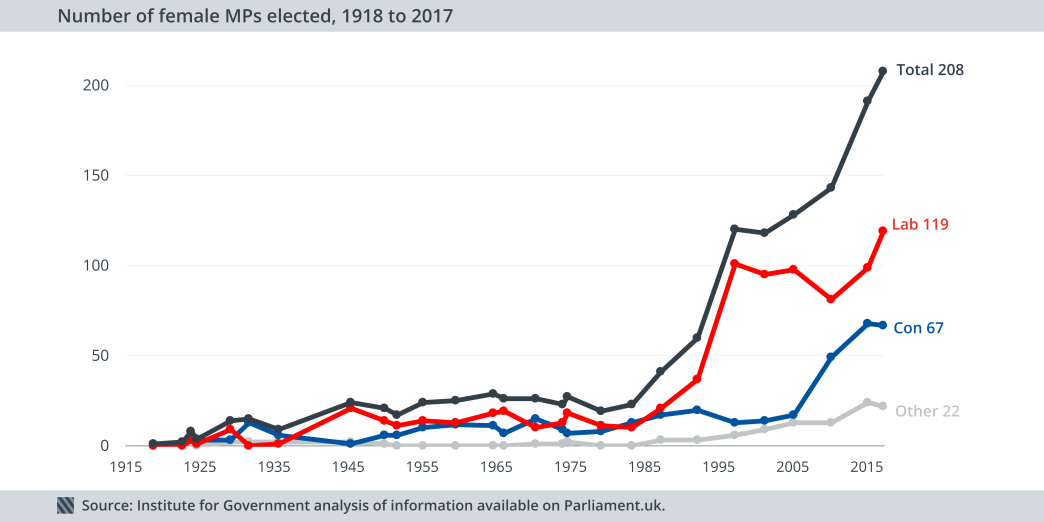
There are currently 208 female MPs, compared to 442 male MPs, making this House of Commons the most gender-balanced in history.
Following the 2017 election the total number of women elected as MPs since 1918 (489) overtook the number of male MPs in the current Parliament (442) for the first time.
So what about the future?
Diversity is a matter of fairness. Diverse teams are also more effective and make better decisions: the civil service Diversity and Inclusion Strategy puts forward the business case for diversity.
It is clear that diversity strategies are working in some respects. The growth of female representation in Commons is due to targeted policies. For example, the dramatic increase in the number of female Labour MPs was due to the introduction of all-female shortlists. The Diversity and Inclusion Strategy sets out a number of steps that the civil service is taking to improve its gender balance.
But diversity targets have been set before: in the Talent Action Plan, Permanent Secretary Objectives, and Single Departmental Plans. New objectives need to be implemented and tracked to ensure they are achieved.
- Supporting document
- 5890 IFG - Whitehall Monitor 2018 web.pdf (PDF, 5.4 MB)
- Topic
- Civil service Ministers
- Keywords
- Diversity and inclusion
- Publisher
- Institute for Government